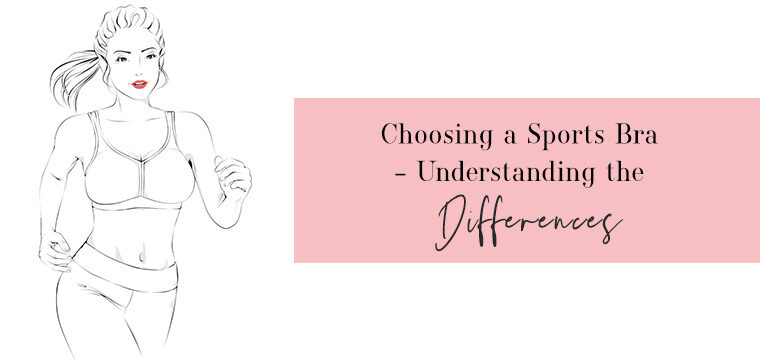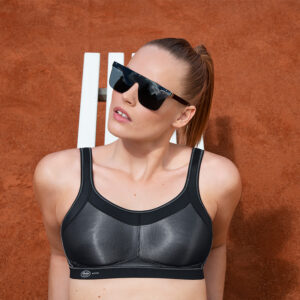Sports bras are usually labelled as suitable for low/medium/high impact and we have found over the years that this can cause some confusion amongst the wearers. The language speaks directly to the level of exercise that you are planning to undertake, the levels of ‘impact’ relate to the intensity of the exercise and the breasts movement during the sporting activity. So basically high impact activity requires a high level of support and so on.
Examples of exercises that are high, medium and low impact include:
High – Running, Tennis, Zumba, Horse riding,
Medium – Skiing, Hiking, Cycling/Spinning,
Low – Thai Chi, Pilates, Rollerblading.
Choosing your level of support has nothing to do with your cup size however, for instance the idea that ladies with a smaller bust can get away with low impact bras for every kind of sport is simply not true. Similarly the idea that a larger cup size lady shouldn’t use a low impact sports bra is also inaccurate.
This is because breast damage is caused by breast movement, not size. If the body is moving up and down then so is the breast – with a delay. All good bra manufacturers construct bras for smaller or larger sizes in a different way, for larger sizes there will be features such as extra lining in the cup, side supports, reinforced wider straps etc. If the bra is well constructed with the right fabrics they will still have the choice of impact level. Some full breasted ladies are self conscious and prefer to wear the highest level of support for confidence and if they are more comfortable doing this, that’s fine.
It can be worth buying a second bra in a larger size to accommodate for fluctuation in breast size caused by hormonal cycle. As sports bras are made of strong fabrics with minimal stretch it can be very uncomfortable to force swollen, tender breasts into a bra made of a rigid fabric.
Since Sports bras are designed for performance – aesthetics are a secondary consideration however some bras suit different body shapes by design. Smaller shoulders often prefer racer backs, fuller busts – regular straps. The best advice is to try it on, jump around and make sure you feel comfortable and confident.
Perspiration affects a bras comfort; therefore sports bras should have a sweat management system. Cups lined with soft, absorbent fabrics to wick moisture away from the breast, if there is no cup lining you risk exposed seams rubbing on a sweaty breast which can lead to soreness and discomfort.
Generally speaking non padded bras are more supportive – a pad is pre formed and unless the breast fits perfectly within it, the breast will move around inside it. The pad also creates a barrier between the breast and compression fabric on the exterior which reduces support. However new innovations such as the patented Anita delta pad are designed in a triangular form to ensure the benefit of padding for preventing nipple show and giving shape, but removing the ability for the breast to move in the pad. This means support is not reduced as compression can still be applied all over the breast.









Diana says:
For choosing the right sports bra I always notice three things the strap, cup and the band. Right selection of sports bra is important because that will define how you will be able to perform throughout the day.